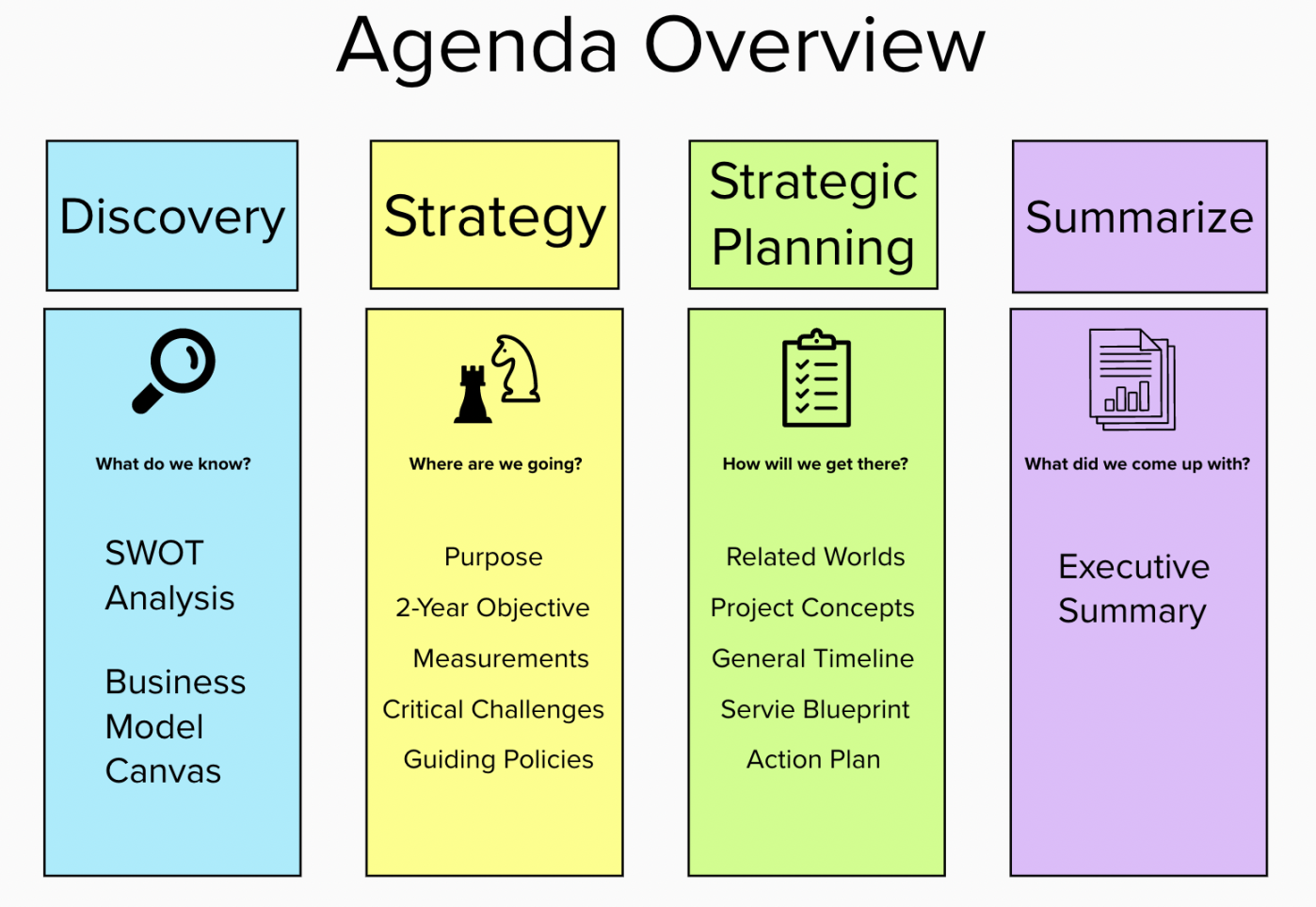The Foundation of Effective Strategic Planning
A well-structured Agenda is the cornerstone of a successful strategic planning workshop. It provides a clear roadmap for the session, ensuring that all key topics are covered and discussions are productive. When creating an agenda, it’s essential to consider the workshop’s specific goals, the participants’ roles and expertise, and the desired outcomes.

Key Elements of a Professional Agenda
1. Workshop Title and Date: Clearly state the workshop’s purpose and the date it will be held.
2. Welcome and Introductions: Begin the session with a warm welcome and brief introductions to facilitate networking and establish a comfortable atmosphere.
3. Workshop Objectives: Outline the specific goals and objectives of the strategic planning session. This will help participants understand the purpose of the workshop and align their contributions accordingly.
4. Review of Existing Strategy (If Applicable): If the organization already has a strategic plan, allocate time to review its key components, successes, challenges, and areas for improvement. This will provide a valuable foundation for the planning process.
5. External Environment Analysis: Discuss the external factors that could impact the organization’s future, such as economic trends, technological advancements, industry changes, and competitive landscape. This analysis will help participants identify potential opportunities and threats.
6. Internal Assessment: Evaluate the organization’s strengths, weaknesses, opportunities, and threats (SWOT analysis). This will help participants identify areas for improvement and leverage existing strengths.
7. Vision and Mission Statements: Develop or refine the organization’s vision and mission statements to provide a clear direction for the future. These statements should be inspiring, concise, and aligned with the organization’s values.
8. Goal Setting: Identify and prioritize key goals that will help the organization achieve its vision and mission. These goals should be specific, measurable, achievable, relevant, and time-bound (SMART).
9. Strategy Development: Discuss and develop strategies to achieve the identified goals. These strategies should be aligned with the organization’s vision, mission, and values, and should address the key challenges and opportunities identified in the previous steps.
10. Action Planning: Create a detailed action plan outlining the specific tasks, responsibilities, timelines, and resources required to implement the strategies. This will ensure that the strategic plan is translated into tangible actions.
11. Communication and Implementation: Discuss how the strategic plan will be communicated to stakeholders and implemented effectively. This may involve developing a communication plan, providing training, and allocating resources.
12. Evaluation and Review: Establish a process for monitoring progress and evaluating the effectiveness of the strategic plan. This will help the organization identify areas for improvement and make necessary adjustments.
13. Closing Remarks and Next Steps: Summarize the key outcomes of the workshop and outline the next steps for implementing the strategic plan. Thank participants for their contributions and encourage them to continue their involvement in the planning process.
Design Elements for Professionalism and Trust
Clear and Concise Language: Use simple, clear language that is easy to understand. Avoid jargon and technical terms that may confuse participants.
By carefully crafting a professional agenda, you can create a strategic planning workshop that is productive, engaging, and ultimately successful. A well-structured agenda will help participants stay focused, contribute meaningfully, and leave the workshop with a clear understanding of the organization’s future direction.